
It allows to keep PV going, with more focus towards AI, but keeping be one of the few truly independent places.
-
I'll try to collect here common QnA and also typical myths and Chinese manufacturers tricks.
-
UTP - Unshielded Twisted Pair
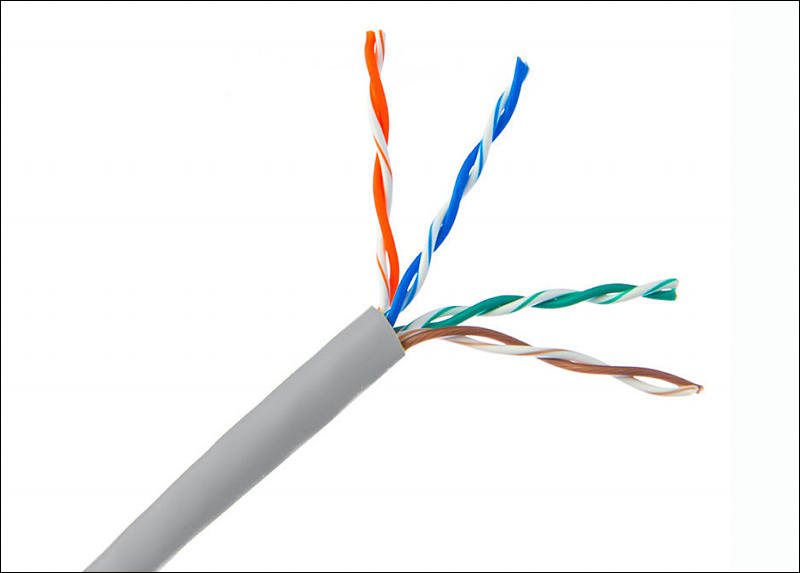
Most common type of Ethernet cables sold in big lengths as well as separate patch cords.
Cables that are fixed and laid in cable channels must use solid-conductor (copper), usual gauges are 24 AWG for longer cables and 26 AWG for shorter ones (or cheaper ones).
- 24 AWG wire has 0.511mm diameter and 84.22mΩ/m resistance in case of copper usage.
- 26 AWG wire has 0.405mm diameter and 133.9mΩ/m resistance in case of copper usage.
Main savings in cable are always in reduction or total elimination of copper usage.
So all cheap Chinese cables or patch cords try to use 26 AWG wires and try to use aluminum where possible.
Note that Cat 6 patch cord or cable can be actually worse compared to good 5e one. But usually they are using thicker wires (23-24 AWG), more wire turns per same length for each pair (2 or more twists per cm. ), as well as better quality connectors. Cat5e cable features 1.5-2 twists per cm, Cat6 cables are more tightly wound as said above.
For short lengths you usually can use 5e patch cords and cables even for 10 Gigabit Ethernet. Issue here can be bad connectors mostly.
For longer 10Gbit lengths up to around 35-50m you need Cat 6 (and 6a) cables.
For even longer lengths you need to go up to 6A or 7.

 sa6981.jpg800 x 573 - 31K
sa6981.jpg800 x 573 - 31K -
SFTP - Shielded Cables
Typical so called Category 7 cable:
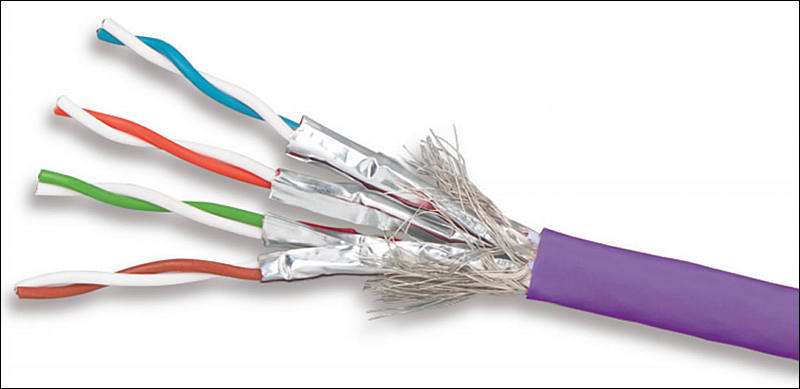
Cheaper category typical SFTP Chinese cable:
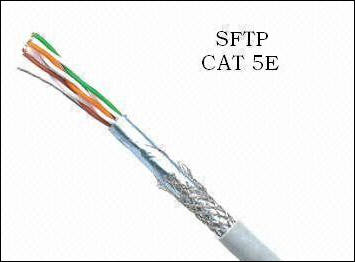
Differential pairs are nice and all, but if you have strong EMI, lot of wireless access points around and quite long wires - shielding can really help.
If you are buying new patch cords or making new cable infrastructure it is always cheaper to do all one time right instead of changing and upgrading all wiring later.
So, try to use Cat 7 fully shielded (both outer shield and individual shield for each pair) cables and patch cords. Also make sure to look for wire gauge. For all stationary cables use thickest you can find (23-24 AWG usually).
Connectors of shielded cables:
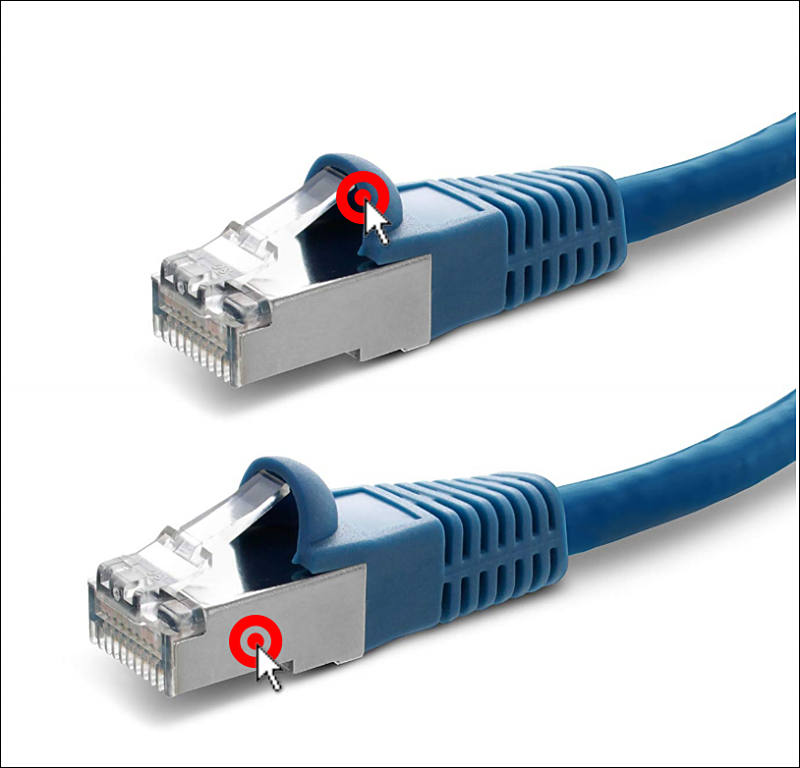
Also always use protection for RJ45 connector lock (if you do cables yourself do it also using rubber protectors).
And always buy patch cords with such feature. It is sad to throw out nice expensive patch cord with broken lock.

 sa6980.jpg800 x 389 - 34K
sa6980.jpg800 x 389 - 34K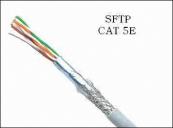
 sa6985.jpg355 x 262 - 12K
sa6985.jpg355 x 262 - 12K
 sa6985.jpg355 x 262 - 12K
sa6985.jpg355 x 262 - 12K
 sa6983.jpg800 x 768 - 56K
sa6983.jpg800 x 768 - 56K -
- TP=no shielding at all.
- F/UTP=unshielded pairs with an overall foil shield.
- Sc/UTP=unshielded pairs with a screened (braided) shield.
- F/FTP=shielded pairs with overall foil shielded.
- Sc/FTP=shielded pairs with screened shield.
Cat5e through cat6 can be constructed with any of the above depending on the users requirements.
Cat7 and up must be Sc/FTP because of the extended frequency range. The shielded pairs mitigate internal crosstalk and the screen mitigates alien crosstalk between cables in a bundle.
- Cat5e=100 MHz, 1Gb/s at 100m, any connector style.
- Cat6= 250MHz, 1Gb/s at 100m, 10Gb/s at 55m, any connector style.
- Cat6A= 500 MHz, 10Gb/s at 100m, any connector style.
- Cat7= 600 MHz, 10Gb/s at 100m, only EC7, GG45 or TERA connectors (google them), RJ45 not supported.
- CatA= 1000 MHz, 10Gb/s at 100m, 25Gb/s at 50m, only EC7, GG45 or TERA connectors, RJ45 not supported.
- Cat8.1= 2000MHz, 10Gb/s at 100m, 40 Gb/s at 30m, any connector style.
- Cat8.2=2000 MHz, 10Gb/s at 100m, only EC7, GG45 or TERA connectors, RJ45 not supported.
Howdy, Stranger!
It looks like you're new here. If you want to get involved, click one of these buttons!
Categories
- Topics List23,911
- Blog5,718
- General and News1,330
- Hacks and Patches1,148
- ↳ Top Settings33
- ↳ Beginners254
- ↳ Archives402
- ↳ Hacks News and Development56
- Cameras2,342
- ↳ Panasonic984
- ↳ Canon118
- ↳ Sony154
- ↳ Nikon95
- ↳ Pentax and Samsung70
- ↳ Olympus and Fujifilm98
- ↳ Compacts and Camcorders295
- ↳ Smartphones for video96
- ↳ Pro Video Cameras191
- ↳ BlackMagic and other raw cameras116
- Skill1,959
- ↳ Business and distribution66
- ↳ Preparation, scripts and legal38
- ↳ Art149
- ↳ Import, Convert, Exporting291
- ↳ Editors190
- ↳ Effects and stunts115
- ↳ Color grading197
- ↳ Sound and Music280
- ↳ Lighting96
- ↳ Software and storage tips266
- Gear5,407
- ↳ Filters, Adapters, Matte boxes344
- ↳ Lenses1,577
- ↳ Follow focus and gears93
- ↳ Sound496
- ↳ Lighting gear313
- ↳ Camera movement230
- ↳ Gimbals and copters302
- ↳ Rigs and related stuff271
- ↳ Power solutions83
- ↳ Monitors and viewfinders339
- ↳ Tripods and fluid heads139
- ↳ Storage286
- ↳ Computers and studio gear559
- ↳ VR and 3D248
- Showcase1,859
- Marketplace2,834
- Offtopic1,314




